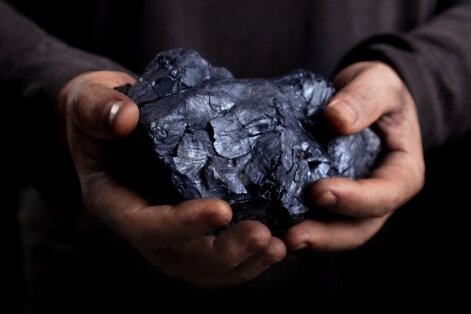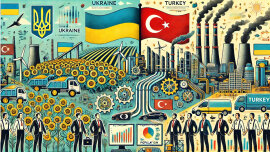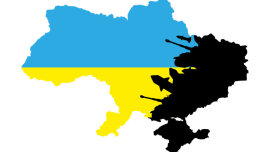Minister of Energy of Ukraine German Galushchenko, during his briefings, claims that in 2022, 188 thousand tons of coal were mined at state-owned mines, which is 25.3% more than in the same period in 2021. The Minister swears to guarantee that there is enough coal for heat generation, there is no threat of disruption of the heating season, and we have imagined all rolling blackouts. But, according to the system operator NPC "Ukrenergo", as of 17:00 on January 20, 2022, 10 out of 23 power units of the TPP of the state company "Centrenergo" do not work due to a shortage of coal. So who's lying? Where is the coal? And why is Galushchenko still in his position?
SLEIGHT-OF-HAND AND “GOOD” STATISTICS
January 18, Minister of Energy German Galushchenko during his briefing, probably answering our constant annoying questions, stated that "Ukraine's energy system is stable and provides reliable electricity to consumers, despite the consistently high energy consumption" Head of the Ministry of Energy stated that “the energy system has a sufficient reserve of capacities: at hydroelectric power plants/pumped storage power plants and thermal power plants - more than 2500 MW. The reserve capacity of nuclear generation is about 900 MW”.
At the same time, according to him, there is a sufficient supply of energy carriers for the further stable passage of the autumn-winter period. “For the second month in a row, there is a stable accumulation of coal in warehouses. Coal stocks at TPPs and CHPPs as of January 17, 2022 exceeded stocks as of January 17 last year by 26%,” — noted the minister.
On January 21, the Ministry of Energy published message that in 2022, 188 thousand tons of coal were mined at state mines, which is 25.3% more than in the same period in 2021 (159.9 thousand tons) and 47.3% more than in 2020 (125.2 thousand tons).
On January 19, at a government meeting, Prime Minister Denys Shmygal assured the citizens of Ukraine that "more than half of the heating season is behind us. The energy system is working stably, despite the pessimistic and sometimes panicky statements of individual politicians. Coal reserves continue to grow, and have already exceeded last year's reserves for this There are sufficient reserves of power at nuclear, thermal, and hydroelectric power stations... This applies to both coal and gas.”
However, the power engineers themselves do not agree with such calming mantras of top officials.
By data of NEC "Ukrenergo" as of 17:00 January 20, 2022, 10 out of 23 power units of TPPs of the state-owned company Centrenergo are not operating due to a shortage of coal. 7.5 power units are in operation. The remaining 6 blocks are under renovation.
Most of the power units for lack of coal are idle at the Zmievskaya TPP. At the station, 6 out of 10 units are not working. At Trypilska TPP, due to the lack of coal, 2 units and 1 circuit are idle, at Uglegorskaya - 1 power unit.
As of January 20, there are 130,000 tons of coal at the state TPP "Centrenergo". None of the three TPPs meets the minimum standard for coal accumulation.
Director of Naftogaz Teplo Fyodor Shevchenko in general offers heat generation to switch from coal to biological waste, burning reeds and sawdust. The final decision on the transition will be taken after the results of a study on the modernization of CHP plants to renewable energy sources. If this is not possible, then the CHP will remain on gas.
But the situation with gas reserves is no better. By data of storage operator Ukrtransgaz JSC, from the beginning of the heating season, from October 2, 2021 to January 9, 2022, natural gas reserves in underground storage facilities (UGS) decreased by 30.7% (by 5 billion 749.8 million cubic meters ) - up to 12 billion 950.3 million cubic meters.
In 2021, gas injection into UGS facilities in Ukraine amounted to 3.589 billion cubic meters. m (in 2020 - 13.621 billion cubic meters), withdrawal - 13.621 billion cubic meters. m (in 2020 - 7.945 billion cubic meters).
Telegram channel TOP ENERGY writes that a letter was placed on the desk of the Prime Minister and Minister of Energy, which refers to a possible "crisis of the emergency level in the gas market." We are talking about the fact that regional gas companies continue to withdraw gas from the system for production and technological losses free of charge. The GTS operator cannot stop the withdrawal, as this will lead to shutdowns of the population, district heating, social infrastructure and industry. Failure to pay for gas withdrawals and delaying the issue of imposing special obligations threatens the GTS Operator with bankruptcy, which can nullify its certification, and the entire transit.
This means that the shortage of coal will not be covered with gas...
Attention, the question is: WHERE IS THE COAL WHICH SHOULD, ACCORDING TO GALUSHCHENKO, BE ENOUGH FOR UKRAINIAN TPPs?
WHERE DOES COAL GO?
In its reports, the Ministry of Energy is trying in every possible way to show the increase in coal in the country. At the same time, sometimes state officials attribute to themselves the merits of private companies.
The lion's share of the increase in coal reserves occurred due to the growth in fuel reserves at DTEK Energy TPPs, which amounted to 81% or 223 thousand tons. In September-December 2021, DTEK imported 880 thousand tons of coal. State "Centrenergo" received 4 vessels with coal during this time.
Media report that now the world coal prices have skyrocketed due to the fact that traders in Asia are trying to snatch winter supplies. Traders fear delays in Indonesian coal deliveries and the ongoing global energy crisis. Australian coal for February loading was sold for $300 a ton on Friday. This is one of the most expensive cargoes ever, traders say, and could push the spot price index above its October record high. In other words, coal becomes pricey and may soon become unaffordable for Ukraine.
So where did the Ukrainian coal go, the growth of which production was so promoted by German Galushchenko? In 2021, the Ukrainian coal industry produced 3.9 million tons of coal (the country's demand is estimated at 10 million tons). Of these, 2.1 million tons went to the needs of heat generation. 1.8 million tons, according to the reports of the Ministry of Energy, were received by “other consumers”... In fact, we are talking about private oligarchic companies that, through various “schemes”, buy coal for their metallurgical enterprises.
I am not saying that it is necessary not to give coal to industry, and to burn everything in thermal power plants. But I would like to know how much did the state earn by selling coal to “other consumers” and how much did we, as taxpayers, pay for ships with foreign coal for heat generation ? Where is the "margin"? Who made money on this?
WHY IS IT IMPORTANT
Ukraine plans to complete synchronization with the European energy system in 2023. 20 January European Commissioner for Energy Kadri Simson stated to German Galushchenko that Brussels "absolutely supports" synchronizing Ukraine with the European energy system. Ukrenergo received certification from the European Network of Electricity Transmission System Operators (ENTSO - E) in December.
Let me remind you that we have invested more than 600 million euros in the modernization of our energy system to prepare for synchronization.
This year, in winter, the energy system is scheduled to operate in an isolated mode. Ukraine's power system is expected to operate for 3 days in isolation, plus one day of entry into isolation and one day of exit.
In practice, we are disconnecting from the energy system with Belarus and Russia. We exist in an isolated mode, after which we must reconnect to the Republic of Belarus and the Russian Federation, and after a summer isolated test, in 2023, completely reconnect to the European energy system. But there is one flaw!
It consists in the fact that our energy sector must have a supply of coal and gas. It is needed not only for 3-5 days, but also in case Russia and Belarus refuse to reconnect us to their energy system. Especially if we don't have a supply of coal in our warehouses.
Therefore, I have natural questions: why, with the growth of coal production, half of the heat generation units are idle? Will we have coal in the warehouses of the thermal power plant during the passage of the “isolation” regime of the energy system of Ukraine? Will we be able to hold out "in the long run" if the Russians refuse to reconnect? Who will bear personal responsibility for the collapse of the energy system? How will President Volodymyr Zelensky calm people down if the power industry goes down and thermal power plants turn off?

























